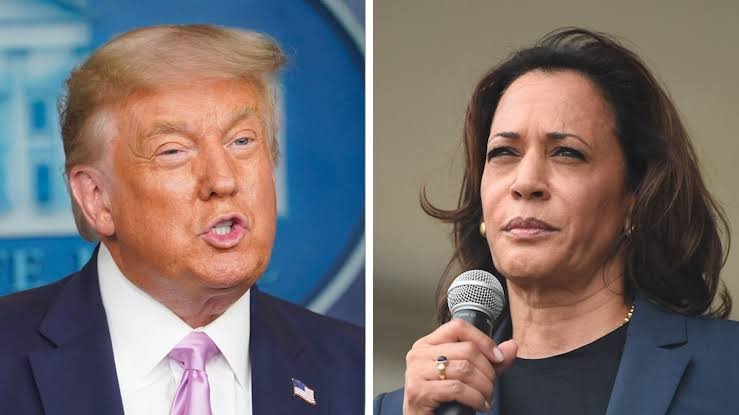The debate between Kamala Harris and Donald Trump was a highly anticipated event, characterized by its intensity and the stark contrast between the two candidates. This debate, set against the backdrop of a politically charged climate, illuminated the key issues dividing the American electorate and showcased the differing visions for the future of the United States.
Kamala Harris, the Vice President at the time, represented the Democratic Party’s stance on various issues, advocating for policies aimed at addressing systemic inequities and advancing social justice. Donald Trump, the former President and Republican candidate, offered a counter-narrative emphasizing his administration’s achievements and promising a return to his style of governance. The debate was not just a clash of policies but also a contest of personalities and visions for America’s future.
The primary issues discussed during the debate included the handling of the COVID-19 pandemic, economic recovery, immigration, and climate change. On the pandemic, Kamala Harris criticized the Trump administration’s response, arguing that the lack of a coherent national strategy led to unnecessary loss of life and economic hardship. She highlighted the need for a more coordinated approach to health crises and emphasized the importance of science and public health measures. Trump, on the other hand, defended his administration’s actions, asserting that the rapid development of vaccines and economic relief packages were significant achievements. He framed the pandemic response as a success in terms of vaccine distribution and reopening efforts, downplaying the criticisms of his administration’s handling of the crisis.
Economic recovery was another major point of contention. Harris argued that the economic policies of the Trump administration favored the wealthy and exacerbated income inequality. She promoted the Biden administration’s approach, which included substantial investment in infrastructure, education, and healthcare as a means to foster a more equitable economic recovery. Trump countered by touting the pre-pandemic economic boom as evidence of his successful policies, including tax cuts and deregulation. He argued that his administration’s economic record was strong and that returning to his policies would reignite growth and prosperity.
Immigration policy also featured prominently in the debate. Harris criticized Trump’s immigration stance, particularly his administration’s family separation policies and the handling of asylum seekers. She advocated for a more humane approach to immigration, one that included pathways to citizenship and better support for immigrant communities. Trump defended his tough stance on immigration, portraying it as necessary for national security and economic stability. He framed his policies as efforts to protect American jobs and prevent illegal immigration, arguing that they were essential for maintaining law and order.
Climate change was another critical issue. Harris emphasized the urgency of addressing climate change, highlighting the Biden administration’s commitment to rejoining the Paris Agreement and investing in clean energy. She framed climate action as a critical component of both environmental stewardship and economic opportunity. Trump, however, expressed skepticism about the costs associated with aggressive climate policies, arguing that they could harm American industries and jobs. He suggested that his administration had prioritized energy independence and economic growth while being cautious about the financial implications of extensive climate regulations.
Throughout the debate, the contrasting styles of the candidates were evident. Harris, known for her prosecutorial background, was methodical and focused, often using data and evidence to back her arguments. She sought to present a vision of competence and progress, aiming to demonstrate a clear alternative to Trump’s presidency. Trump, characterized by his combative and rhetorical style, frequently interrupted and challenged Harris’s points with sharp and sometimes incendiary remarks. He used his platform to reinforce his brand as a political outsider and champion of populist causes, often steering the conversation towards his grievances with the media and his opponents.
In terms of who dominated the debate, it largely depended on the perspective of the viewers. Harris’s performance was praised by those who valued a detailed and reasoned discussion of policy issues. Her ability to stay composed and articulate her arguments effectively was seen as a strength, particularly in contrasting her vision with Trump’s. On the other hand, Trump’s supporters viewed his assertive and unfiltered approach as a refreshing contrast to what they perceived as a politically correct discourse. His ability to energize his base and frame the debate in terms of his broader political narrative played well with his audience.
The debate was emblematic of the polarized nature of contemporary American politics. It underscored the deep divisions in the electorate and highlighted the different priorities and strategies proposed by the two candidates. Harris’s emphasis on systemic change and equitable policies contrasted sharply with Trump’s focus on economic nationalism and populist rhetoric. Each candidate presented a distinct vision for the future, reflecting the broader ideological divide within the country.
Ultimately, the debate was more than just a discussion of policies; it was a reflection of the broader ideological and cultural battles shaping American politics. Harris’s performance was seen as a showcase of her policy expertise and her alignment with the Democratic Party’s vision. Trump’s performance reinforced his role as a disruptor and an advocate for conservative values. The debate served as a microcosm of the contentious and highly charged political environment of the time, with each candidate striving to convince voters of their vision for America’s future.





Leave a Reply